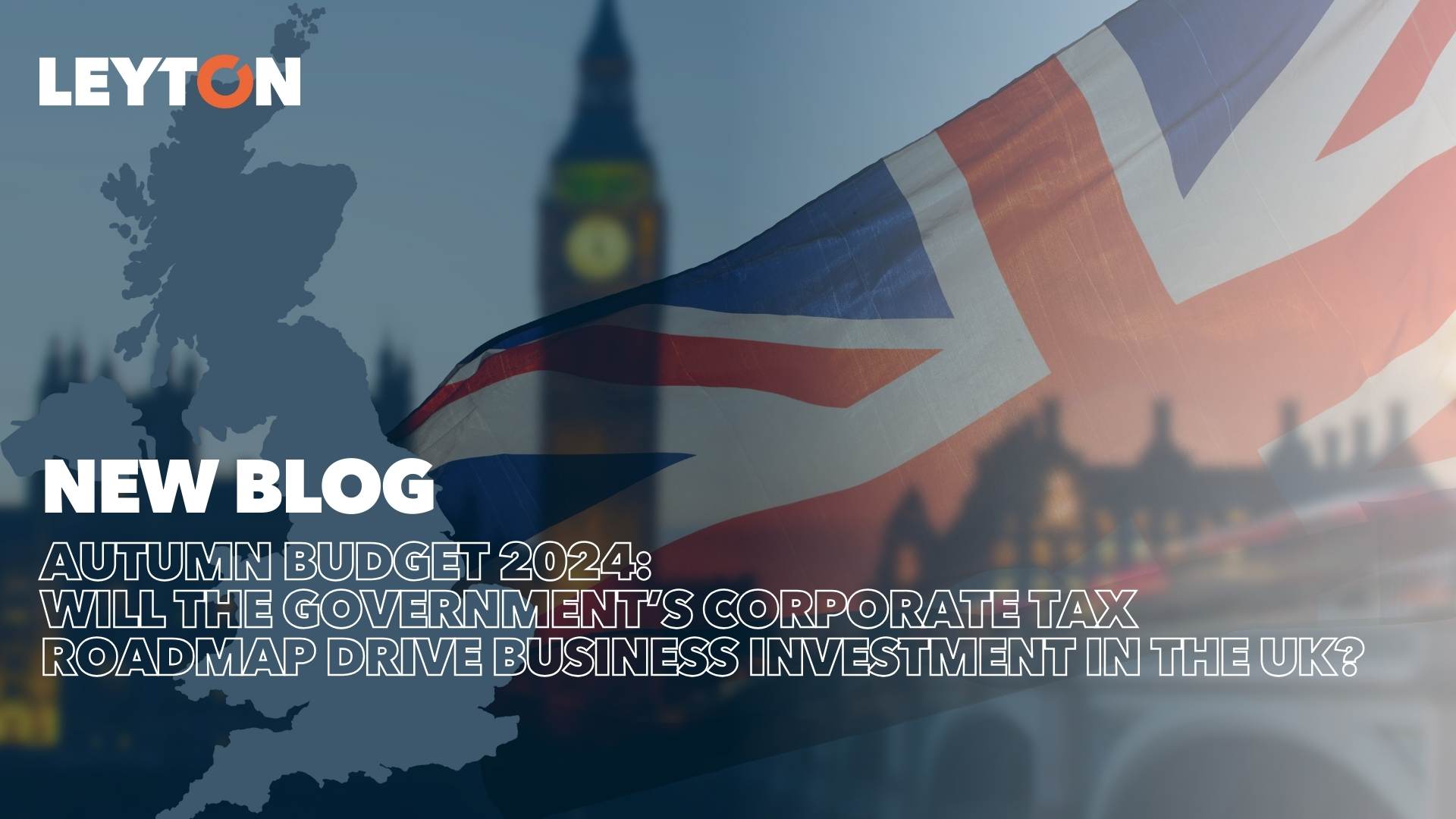
Accompanying the Autumn Budget 2024, the government released their Corporate Tax Roadmap to outline plans for Corporation Tax (CT) over the next five years.
While the plans detail some commitments, they also outline a framework for where the government is looking to explore making changes in the future. The aim is to provide a ‘stable and predictable tax environment for businesses’, many of whom are still reeling from raises in employer contributions to National Insurance – including many tech companies in the North West of England.
The publication is a first step, which is to be followed by the release of an Industrial Strategy, the conclusion of the Spending Review, and plans for meeting our net-zero targets.
In this article, we explore the Corporate Tax Roadmap to highlight where the government has made firm commitments and where they have suggested potential changes that may affect innovative businesses, including to R&D Tax Credits, Patent Box (and other intangible assets), Capital Allowances and Land Remediation Relief.
What is the purpose of the Corporate Tax Roadmap?
The Corporate Tax Roadmap is the government’s way of giving UK businesses confidence, providing them with as much advance notice as possible to encourage ‘investment, innovation, and growth over the long-term’. More importantly, it contains promises on what won’t be changing, which is why the headline announcement is the capping of CT at 25% for the whole of this Parliament.
There are a few reasons why the government is trying to tread carefully here. The last time Labour delivered a budget was in 2010 and, like any new party in office, they are keen to win the trust of the business community.
Raising private investment and boosting economic growth are seen as vital measures of success, but low growth and falling global economic competitiveness have been problems for the UK since the financial crisis of 2007-09.
Just recently, both ‘low investment’ and ‘policy uncertainty’ were identified as primary causes for low growth in a research paper written for Members of Parliament after the 2024 general election. By providing certainty, the government is hoping to finally unlock investment to get the economy growing again.
Of course, that doesn’t mean that nothing is set to change. As part of driving growth, the government wants to improve the efficiency of the tax system, making it more customer-friendly while improving the accessibility and targeting of key relief schemes. Another goal is to reduce fraud and error. As such, these are the areas that the Corporate Tax Roadmap focuses on when proposing potential changes.
What does the Corporate Tax Roadmap say about R&D Tax Credits?
R&D Tax Credits are key to driving innovation as they incentivise private investment for developing new and improved products and services. The Corporate Tax Roadmap makes a series of clear commitments on R&D reliefs, including:
- Keeping the current rates for the merged RDEC scheme and the Enhanced Support for R&D Intensive SMEs.
- Establishing an R&D expert advisory panel to improve signposting and guidance on R&D reliefs.
- Launching an R&D disclosure facility by the end of 2024, which will have powers to tackle agents who breach the set standards.
- A consultation in spring 2025 on widening the use of advance clearances in R&D relief.
- Periodically reviewing the evidence on R&D reliefs to ensure they’re effective.
- Improving R&D claim administration and customer service after concerns were raised about the recent level of HMRC scrutiny.
- Continuing to tackle error and fraud while making the claims process as simple as possible.
The roadmap also makes some overarching observations about R&D Tax Credits, including:
- Every eligible business conducting research and development will receive between £15 to £27 for every £100 of qualifying R&D expenditure.
- The UK’s merged RDEC rate of 20% is the joint highest uncapped headline rate of R&D relief in the G7 for large companies.
- R&D Tax Credits are expected to drive £56 billion of business R&D spend a year by 2029-30 (as a reference point, 2022-23 saw an estimated £46.7 billion of R&D spend).
- HMRC believes they have reduced error and fraud by almost 10% between 2021-22 and 2023-24.
What does the Corporate Tax Roadmap say about Patent Box and intangible fixed assets?
When the treasury previously tried to estimate the knowledge economy’s worth, they came up with a value of between £100bn and £150bn for assets in the UK public sector – but they felt this number was conservative, as more and more companies shift from physical assets to intangible ones.
Regardless, it’s clear that the knowledge economy is vital for economic growth. As such, the Corporate Tax Roadmap commits to keeping the current tax benefits for patents (via Patent Box) and other intangible fixed assets like trademarks, designs, intellectual property rights, etc.
What does the Corporate Tax Roadmap say about Capital Allowances?
The government has committed to keeping the full-expensing Capital Allowance, the £1 Annual Investment Allowance (AIA), the current structure of writing down allowances, and the Structures and Buildings Allowance.
The Corporate Tax Roadmap does however refer to several potential changes, including simplifying the schemes, exploring how to provide greater clarity of qualifying expenses, and opening the full expensing regime to cover assets bought for leasing or hiring. Separately, there will be a consultation on the tax treatment of predevelopment costs, which will take place later in 2024.
It also suggests that further changes to Capital Allowances would be considered if they help to promote investment and economic growth, give the UK a competitive edge, reduce fraud & error risks, or provide new flexibility for businesses to choose which Capital Allowances to claim.
What does the Corporate Tax Roadmap say about Land Remediation Relief?
While no immediate changes have been announced to Land Remediation Relief, the government has said that they plan to hold a consultation in Spring 2025 to review the scheme’s effectiveness.
The Corporate Tax Roadmap acknowledges that in the past Land Remediation has helped with cleaning up contaminated or derelict land, but as there haven’t been many changes to the scheme since its inception in 2001, the time has come to review whether it’s still helping to increase investments in developing on brownfield land in a cost-effective way.
This article was originally published by Leyton UK. Leyton UK are a member of HMRC’s consultative committee and are therefore well placed to guide you through the recent changes, and help you compliantly maximise your R&D Tax Relief claims.








